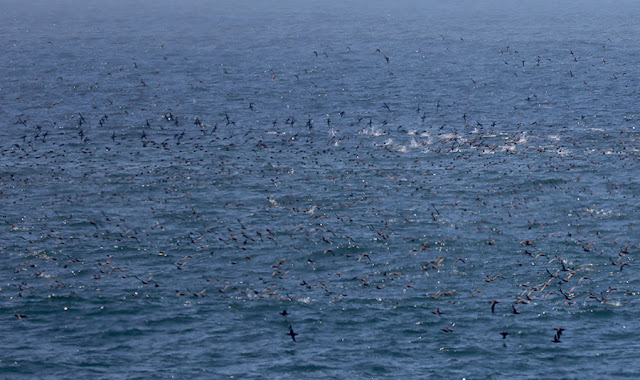We arrived home too late for the rain shower, but in time for a rainbow to our south. Photographed 30 September 2023. Happy for a little rain!
Saturday, September 30, 2023
In time
Thursday, September 28, 2023
Wednesday, September 27, 2023
Friday, September 22, 2023
Thursday, September 21, 2023
Pale beauty -- Part 2
If you'd like to learn more about this species, check out this fact sheet from the Massachusetts Natural Heritage & Endangered Species Program.
Wednesday, September 20, 2023
Pale beauty
Sunday, September 17, 2023
Mink!
What a surprise! Recently we were tidepooling with family in Cape Elizabeth, Maine, when Devin spotted this American Mink (Neogale vison) moving among the rocks in the intertidal zone.
The mink moved quickly, ducking under rock tunnels and among the seaweeds, but I managed a couple of photos with my point-and-shoot camera.
Many thanks to Flori, Augusta, and Devin for a great adventure in Cape Elizabeth!
Saturday, September 16, 2023
A wolf dressed in beach clothing
Eric found this amazing spider on the beach at Reid State Park in Georgetown, Maine, yesterday (15 September 2023). Meet the Shoreline Wolf Spider (Arctosa littoralis)!
The spider blends in with the sand so well that sometimes it was hard to see the entire spider. It was a little easier from the side, so here's that view:
Friday, September 15, 2023
Waving in Lee
Thursday, September 14, 2023
Monday, September 11, 2023
Side by side
I usually encounter Red Knots (Calidris canutus) on the tidal flats in Bodega Harbor, so I haven't seen these two species side by side very often.
The Wandering Tattler is darker gray, shows more subtle pale feather edges (so looks less "scaly"), has more substantial white markings encircling the eye, has a slightly long and thicker (less tapered) bill, and has yellower legs.
The Red Knot is paler gray, has extensive pale feather edges (so looks very "scaly"), has more subtle markings around the eye (but does have a dark line through the eye and pale line above the eye), has a slightly shorter and more tapered bill, and has greenish-yellow legs.
Now I'll show one photo of each so you can guess which is which:
Saturday, September 9, 2023
Porpoising lions
Recently I've been getting quite a few questions about small groups of marine mammals observed swimming near shore off Bodega Head. They're moving so quickly that it can be hard to make out different features. But most of the time these are likely to be California Sea Lions (Zalophus californianus) porpoising at the surface, as shown above.
In photos, you can make out that they're sea lions pretty easily, but as they're swimming by sometimes you'll only see a smooth dark back, so it can be confusing.
Sleek sea lions swimming swiftly at the surface!
Thursday, September 7, 2023
A flash of green
Tuesday, September 5, 2023
Transequatorial migrants
We were about to start a meeting this afternoon when we noticed a dark mass just offshore — thousands of Sooty Shearwaters (Ardenna griseus) in a very dense flock! [I recommend clicking on the images for larger and sharper versions.]
Not long after, we started seeing lots of splashing:











































